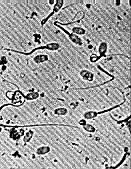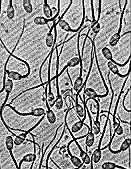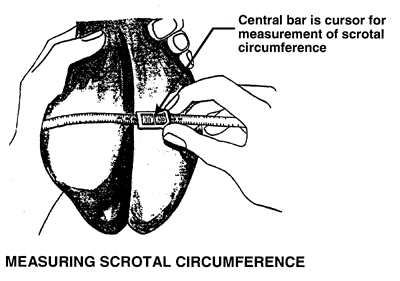

breeding stock selection | linear data systems | predicted transmitting abilities | breeding soundness evaluation | scrotal circumference tape
| Trait | -3 | -2 | -1 | 0 | 1 | 2 | 3 |
Values |
|
| Stature | X | -0.04 | Short | ||||||
| Strength | X | -1.26 | Frail | ||||||
| Body Depth | X | -0.31 | Shallow | ||||||
| Dairy Form |
X |
3.43 | Open | ||||||
| Rump Angle | X | -1.81 | High Pins | ||||||
| Thurl Width |
X |
0.63 | Wide | ||||||
| Rear Legs-Side Set |
X |
-0.15 | Straight | ||||||
| Rear Legs-Rear View |
X |
0.21 | Straight | ||||||
| Foot Angle |
X |
0.89 | Steep | ||||||
| Foot & Legs Score |
X |
1.14 | High | ||||||
| Fore Udder Attachment |
X |
1.56 | Strong | ||||||
| Rear Udder Height |
X |
1.17 | High | ||||||
| Rear Udder Width |
X |
1.04 | Wide | ||||||
| Udder Cleft |
X |
1.82 | Strong | ||||||
| Udder Depth |
X |
1.56 | Shallow | ||||||
| Front Teat Placement |
X |
3.02 | Close | ||||||
| Teat Length | X | -0.95 | Short | ||||||
| Udder Composite | X | 1.69 | - | ||||||
| Foot & Leg Composite |
X |
0.83 | - | ||||||
Understanding the Linear Data Results:
| USDA PTA, 08/2001, Dtrs 256, Herds 123, TPI+1433 | ||||||
| % | lbs | Reliability | ||||
| Milk | +1070M | - | - | - | ||
| Protein | $ | 0.00 | +38 | 96% | ||
| Fat | $ | -0.02 | +39 | 93% | ||
| Net Merit | +$349 | - | - | - | ||
| Calving Ease: 10% Difficult, 93% Reliability, 503 Compared | ||||||
| Somatic Cell Score: | +3.08 | 82% Rel | ||||
| Productive Life: | +1.11 | 78% Rel | ||||
| Trait | Heritability |
| Milk production | .25 |
| Fat production | .25 |
| Protein production | .25 |
| Percent fat and protein | .50 |
| Stature | .35 |
| Strength | .25 |
| Teat placement | .21 |
| Birth weight | .45 |
| Fertility | <.05 |
Breeding Soundness Evaluation (BSE)
:A breeding soundness evaluation (BSE) should be performed on every animal that is brought into a herd or is kept to be a replacement. This exam is essential for all bulls and should include the following:
Sperm Cells: Poor semen quality (left) and good semen quality (right).


Use of Scrotal Circumference Tape: The testicles are pulled firmly into the lower part of the scrotum by encircling the top of the scrotum with one hand and pulling down gently on the testicles. The scrotal tape is formed into a loop and slipped over the scrotum and its contents. The tape is pulled up snugly around the greatest diameter of the scrotal contents.
When weather is cold, males retract their testicles making it difficult to take proper measurements. Special care should be taken to pull the testicles into the bottom of the scrotum and eliminate any wrinkles. The thumb and fingers should be placed on the side of the scrotum, rather than between the testicles. This helps to prevent separation of the testicles and an inaccurate measurement. The circumference is measured in centimeters (cm) and is read at the point where the tape crosses the small steel crossbar on the tape thumb piece.

This table identifies the reproductive characteristics used to identify bulls that have the potential to be good breeders:
|
Characteristic |
Very Good |
Good |
Fair |
Poor |
|
Scrotal Circumference by age: |
>34 cm |
>30 cm |
<30 cm |
<30 cm |
|
Semen Activity |
Rapidly swirling |
Slower swirling |
Some movement or oscillation |
Very slow or sporadic oscillation |
|
>90% normal sperm with no abnormalities |
>70% normal sperm with no abnormalities |
>40% normal sperm with no abnormalities |
<40% normal sperm with no abnormalities |
* Studies show that scrotal circumference size relates directly to quality of semen that is produced.
Other characteristics that should be considered when evaluating a bull for breeding soundness include body condition, size in relation to cows, conformation (feet and legs), testes/scrotum, penis/prepuce, and disposition. A rectal exam should be performed to evaluate the ampullae and prostate. A trichomoniasis test should also be part of any reproductive exam. See page F842 for additional information on trichomoniasis.
When evaluating a female cow for reproductive soundness, a thorough physical exam should be performed. This includes a rectal palpation to evaluate the cervix, uterus, uterine horns, ovaries, and pelvic diameter. Animals that have narrow pelvic diameters may have difficulty calving. Animals that are "freemartins" may not have normal reproductive organs and yet may have relatively normal looking external genitalia (vulva). Freemartins are infertile females that are born twin to a male. Replacement heifers and cows should also be examined and determined to be free of any infectious disease, not only in the reproductive tract, but elsewhere. Diseases of concern include brucellosis, vibriosis, trichomoniasis, leptospirosis, IBR, BVD, and neosporosis. An evaluation of the cow’s body condition, size in relation to bull, conformation (feet and legs), udder, and external genitalia should also be done.
Summary: The decisions on what animal to buy, cull, or keep should be based on facts and if possible, past production. Economics and environmental conditions also influence these decisions. In general, one genetic trait that needs improvement in the herd should be chosen. All purchasing, culling, and replacement decisions should be made based on making this improvement. Once the trait is improved, another trait should be chosen, and management decisions based on improving it should follow.
Because a bull can distribute his genetics to multiple offspring, he has a greater impact on the genetics of a herd than any individual heifer or cow. Therefore, selection of a breeding bull or semen is one of the most important decisions a producer can make.